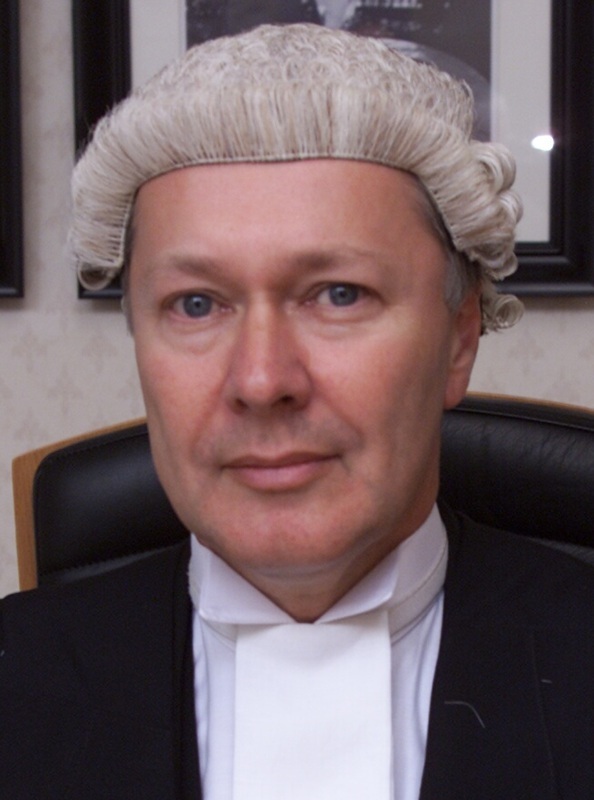A sheriff has ruled that the death of Fife woman admitted to hospital with suspected swine flu at the height of the 2009 pandemic could not have been avoided.
Jessie Taylor (65) died from multiple organ failure caused by streptococcal sepsis and right lung pneumonia at Queen Margaret Hospital in Dunfermline on September 20, 2009 the day after she was admitted to Victoria Hospital in Kirkcaldy complaining of flu-like symptoms.
Mrs Taylor’s family felt the hysteria surrounding swine flu at the time may have influenced the treatment she received and considered something had gone wrong with her care, given that she had walked into an out-of-hours surgery at 2.05pm on Sunday, September 19 and been alert and talking at 6pm, yet had died the following morning.
However, after a week-long fatal accident inquiry at Kirkcaldy last month, Sheriff Grant McCulloch has concluded there were “no reasonable precautions” whereby Mrs Taylor’s death might have been avoided and that there were no defects in any system of working which contributed to her passing.
During the inquiry concerns were raised about the decision of out-of-hours GP Dr Susan Middlemiss not to admit Mrs Taylor directly to accident and emergency after speaking with her on the phone at 11.22am and her decision, after discussion with a hospital bed co-ordinator, to admit her to ward seven the infectious diseases ward and not A&E after seeing her in person after 2pm.
A delay in administering appropriate treatment in ward seven was also flagged up as a possible contributory factor.
However, while Sheriff McCulloch admitted it “undoubtedly would have been beneficial” to send Mrs Taylor to A&E with the benefit of hindsight, he said Dr Middlemiss’s decision was “reasonable and professional” given the fears of swine flu.
“The basis of the criticism was that Dr Middlemiss had not appreciated the real severity of Mrs Taylor’s condition, which necessitated the very urgent administration of oxygen, fluids and antibiotics,” he said.No guarantee”These, it was argued, would have been more rapidly provided in A&E which was inherently organised to deal with such matters quickly. The reality, however, is that there was no guarantee that things would have moved any quicker in A&E than they actually did in ward seven.
“Although it was accepted that, but for the swine flu situation, admission would have been via A&E, I do not consider that Dr Middlemiss and bed co-ordinator Isla Smith can be criticised for taking the ward seven route. The symptoms presenting at the time did not impress such urgency that immediate resuscitation was required.
“Looking back it can be seen that in fact she ought to have been commenced on fluids and antibiotics much sooner but I do not find that the decision to send Mrs Taylor to ward seven can be criticised.”
Evidence at the inquiry suggested a lengthy delay in giving Mrs Taylor fluids and antibiotics represented a “major loss of chance” of her survival.
In his findings Sheriff McCulloch noted it had been “generally accepted” that the quicker that antibiotics and fluids are administered, the better the outcome.
However, he described suggestions that things would have moved quicker in A&E as an “inappropriate comparison” as he found the decision to admit to ward seven reasonable at the time.
“All who considered what was actually done agreed that it was appropriate but the overall picture was of delay, and that delay may have had a bearing on the outcome,” he said.
“It is quite likely that had she been admitted through A&E, either by ambulance or from the out-of-hours clinic, she may have received the necessary treatment sooner but the decisions to deal with her as actually happened were quite justified.
“Hindsight might suggest that it would have been better to treat her with greater urgency, to recognise the serious underlying condition and admit to A&E.
“As it cannot be said with any degree of certainty that the death could have been avoided by earlier treatment, I cannot say that delay in treatment was a circumstance relevant to the death. It was clearly unfortunate and no doubt lessons have been learned.”
The sheriff said he felt all those involved with Mrs Taylor’s care carried out their functions and duties properly, and in accordance with procedures.
